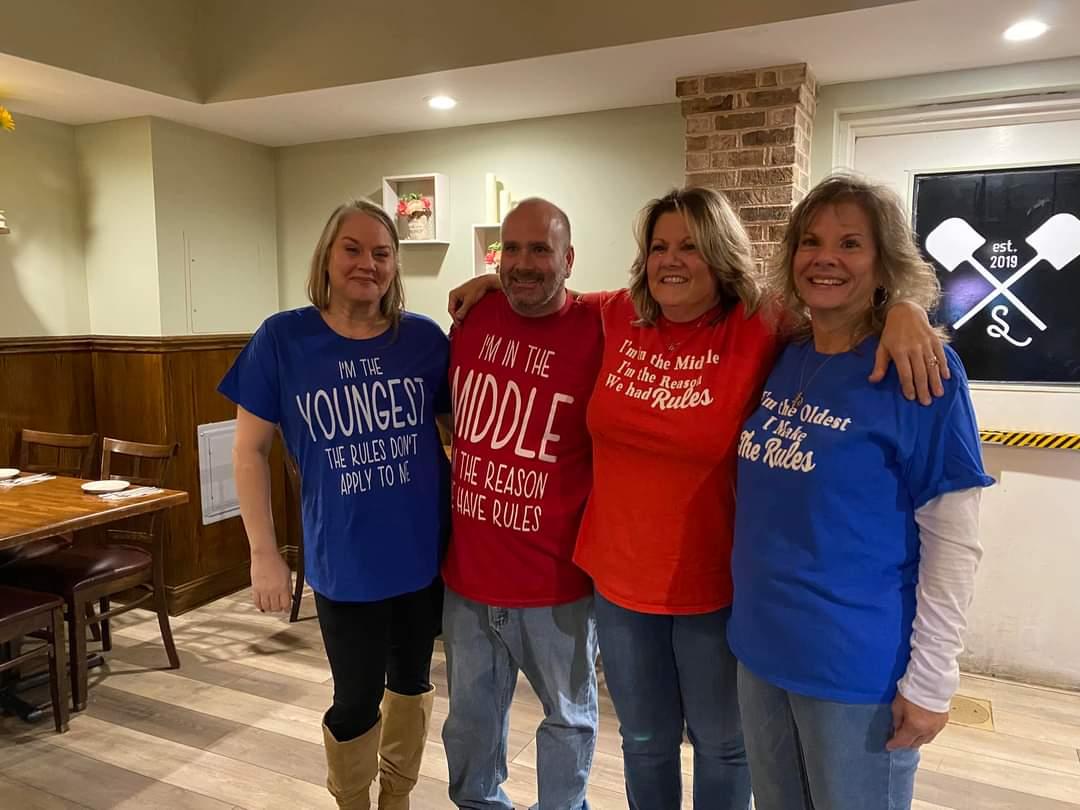Although he’s a doctor, Paulo didn’t use 23andMe to learn about his health. He used the services to learn more about where he came from.
“I didn’t know my biological father so I wondered about my ancestry on my father’s side,” said the hematologist, who is in his 40s.
It wasn’t that Paulo was uninterested in 23andMe’s health offering, he just didn’t expect anything. He knew 23andMe offered health reports and he’d even had a discussion with colleagues about genetic testing in general. The conversation revolved around whether he’d still be interested if it turned out that he had a risk for a condition for which there was no treatment.
“I thought about it before I (used 23andMe), and I’d want to know,” Paulo said. “Because (knowing) would allow me to prepare. But my situation with this result is totally different.”

Paulo used 23andMe while he was in the United States for an extended period of time for a medical conference. When he opened up his reports a few weeks later he learned that he had an increased risk of developing a little-known condition that, if left undiagnosed and untreated, could lead to congestive heart failure. It was stunning, he said. For some, this might have generated angst, but for Paulo, it was the opposite. The knowledge felt empowering.
Editor’s Note: We’ve talked to hundreds of people about what they did ‘after the click,’ after they opened up a report and learned about an unknown risk for breast cancer, or lung and liver disease, or cardiac and neurological issues.
The response isn’t one of fear but empowerment.
Suddenly they and their doctor have information they can use to follow-up on a risk in order to prevent or treat a serious illness. And this is too often for risks they wouldn’t have known of otherwise.
Here is the another in an occasional series about customers who were empowered to take action after learning of a serious health risk through 23andMe.
“The difference is I could do something about it,” he said.
Like most doctors, Paulo would much prefer if, instead of treating someone for an illness, he could help prevent them from getting sick in the first place. But to do that you have to know of a risk beforehand. That knowledge would give you and your doctor the chance to take steps that could prevent an illness or mitigate a sickness before it ever develops. That’s the ideal. But it rarely happens that way. The healthcare system is very good at treating an illness but, as yet, not so good at preventing one.
That’s what made Paulo’s result so empowering and turned his story into one about prevention.
After clicking on his 23andMe Hereditary Amyloidosis (TTR-Related) Genetic Health Risk report,* Paulo learned he had the V122I variant.
It’s associated with an increased risk of developing something called TTR-related hereditary amyloidosis. The condition is characterized by a build-up of a protein called transthyretin (TTR) in various organs in the body, including the heart. It’s notoriously difficult to diagnose and often goes undetected. Left untreated it can lead to congestive heart failure and other symptoms. People with this variant typically do not begin to show symptoms until after the age of 60, and the risk increases with age: One study found that among men over 70 with this variant, the rate of heart failure was 70 percent.
Paulo knew that he should take this information seriously.
After getting his result, he talked to his doctor, who diagnosed his condition after confirmatory testing. He also did some research, learning more about the condition and current treatments, and even looking into clinical trials. In the last few years, new medicines have been developed to treat TTR-related hereditary amyloidosis, and they are widely available and effective. The earlier the diagnosis, the more effective the treatment.
“Now I take the medicine,” he said. “I have an exam each year, and this can help me prevent a very serious condition. It doesn’t get better than that.”
But the outcome isn’t so straightforward for most of those with the variant. Many who carry the variant are unaware of it, just as Paulo had been prior to testing with 23andMe. Most have never even heard of the condition, which is particularly prevalent within the African American and Latino communities (Paulo is Brazilian, and has a mix of African, Indigenous American, and European ancestry). Some stats indicate that up to four percent of African American and one percent of Latinx individuals are at an increased risk for congestive heart failure because they have the variant.
Indeed, about 10 percent of African Americans over the age of 60 with congestive heart failure carry the variant. A recent small study by researchers at Mount Sinai found that genetic testing could help both patients and their doctors treat and prevent TTR-related hereditary amyloidosis. The study identified individuals with the variant through genetic screening (not through 23andMe) within a research cohort in New York City.
A little more than half of those identified as carriers of the V122I variant were African American, and a little under half were Latino. Although none had been diagnosed with TTR-related hereditary amyloidosis, many had early indicators of the condition. None of the participants knew of any family history of TTR-related hereditary amyloidosis. In other words, it’s likely that without testing many would never have learned of their risk.
But one of the biggest takeaways of the study is that, like in Paulo’s case, upon learning they had this pathogenic variant, a majority took action, visiting a cardiologist within eight months. This has given them the opportunity to get earlier treatment for a condition that is under-recognized yet treatable. Early diagnosis is critical, and there are new therapies for it. Getting this information to these individuals early was potentially life-saving.
At least that’s what Paulo believes about his experience using 23andMe.
“In my case, I didn’t have to wait until I had heart problems,” he said. “I can do treatment to prevent it.”
After his condition was confirmed through confirmatory testing, Paulo’s mother tested but she did not have the variant, indicating that he likely inherited the risk variant from his birth father. He is still looking for his birth father, but now in part, he wants to find him to alert him that he may carry the variant that puts him at risk. Maybe his father doesn’t know it and the information could help him too.
“Maybe I can help my dad, whoever he is.”
*The 23andMe PGS test uses qualitative genotyping to detect select clinically relevant variants in the genomic DNA of adults from saliva for the purpose of reporting and interpreting genetic health risks. It is not intended to diagnose any disease. Your ethnicity may affect the relevance of each report and how your genetic health risk results are interpreted. Each genetic health risk report describes if a person has variants associated with a higher risk of developing a disease, but does not describe a person’s overall risk of developing the disease. The test is not intended to tell you anything about your current state of health, or to be used to make medical decisions, including whether or not you should take a medication, how much of a medication you should take, or determine any treatment. The TTR-related hereditary amyloidosis genetic health risk report is indicated for reporting of V122I, V30M, and T60A variants in the TTR gene and describes if a person has variants associated with an increased risk of developing TTR-related hereditary amyloidosis. The majority of the variants included in this report have been most studied in people of African Americans, West African, Portuguese, Northern Swedish, Japanese, Irish, and British descent.




